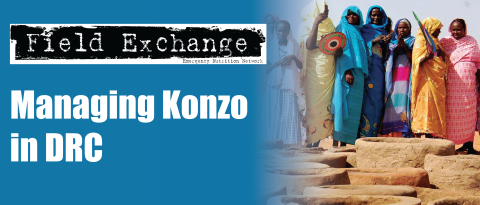New sachet/carton sizes for F75 and F100 therapeutic milks

Old versus new F100 sachets
Substantial changes have been made to the sachet sizes for F-75 and F-100 therapeutic milk as well as to the carton sizes.
Therapeutic milks F-75 and F-100 are used in in-patient centres for the treatment of children with severe acute malnutrition (SAM). The introduction of Ready to Use Therapeutic Food (RUTF) has allowed the majority of children to be treated at the household level. As a result, treatment with therapeutic milk is now recommended only for children with complications who need hospitalization.
F-75 and F-100 contain milk, sugar, oil, minerals and vitamins and are supplied as powders in sachets. Previously, these needed to be reconstituted before use by adding 2 litres of boiled water to the content of each sachet, producing thereafter about 2.4 litres of liquid milk. Reconstituted milk needs to be consumed immediately or used within 24 hours if stored in a refrigerator. Now that most of the children with SAM are treated in out-patient centres with RUTF, the quantity of milk reconstituted was wasted. To try to prevent wastage, suppliers added scoops to sachets to prepare smaller volumes of milk. But this created an additional risk of preparing wrongly diluted milk when an incorrect amount of water was added to scoop-measured powder.
To resolve these problems, UNICEF initiated discussion in 2010 between UNICEF Programme Division, Supply Division, Regional Offices, its implementing partners, nutritionists working in in-patient centres, and suppliers, and concluded that the sachet sizes should be reduced. It was agreed that the optimal volume of the milk should be about 500 ml. Hence it was decided to reduce the sachet sizes by 75 per cent. New sachets will be reconstituted by adding 500ml of boiled cooled water which will result in 600 ml of liquid milk. No scoop will be provided.
Carton sizes have also been adjusted to reflect the higher demand for F-75 and lower demand for F-100. The F-75 carton could previously produce 48 litres of F-75 milk; this has now been increased to 72 litres. The F-100 carton could previously produce 72 litres, but will now produce 54 litres. For details see table below.
The new milks can be ordered from suppliers directly or through UNICEF Supply Division. Product specifications are available in the UNICEF Supply catalogue accessible here: http://www.supply.unicef.dk/catalogue/. The products can be found in Section 03 Nutrition/Therapeutic food.
The price of the F-75 and F-100 as calculated per litre has increased slightly because of the higher volume of packaging material needed for the new sachet sizes. However this will be offset by the saving on wastage of milk.
The product composition has not changed and the nutritional values calculated per 100g of product remain unchanged. The product shelf life remains 24 months.
UNICEF Supply Division has inspected the manufacturing facilities and approved the following sources of F-75 and F-100:
- Challenge Dairy Products Inc in USA
- MSI GmbH in Germany
- Nutriset SAS in France
The composition of the products from these manufactures is identical and the products are therefore interchangeable.
It is important to note that should anybody need F-75 and F-100 in old sachets producing 2.4 litres of milk these could be still ordered from Challenge Dairy Products Inc in USA.
| F-75 | F-100 | |||
| Old | New | Old | New | |
| Sachet size (grams) | 410 | 102.5 | 456 | 114 |
| Volume of water to be added (litres) | 2 | 0.5 | 0.5 | 0.5 |
| Volume of milk produced by 1 sachet (litres) | 2.4 | 0.6 | 2.4 | 0.6 |
| Number of sachet per carton | 20 | 120 | 30 | 90 |
| Net weight of the carton (kg) | 8.2 | 12.3 | 13.7 | 10.3 |
| Volume of milk produced by 1 carton (litres) | 48 | 72 | 72 | 54 |
For more information, conact: Jan Komrska, email: jkomrska@unicef.org, Nutrition Unit, UNICEF Supply Division
Imported from FEX website


